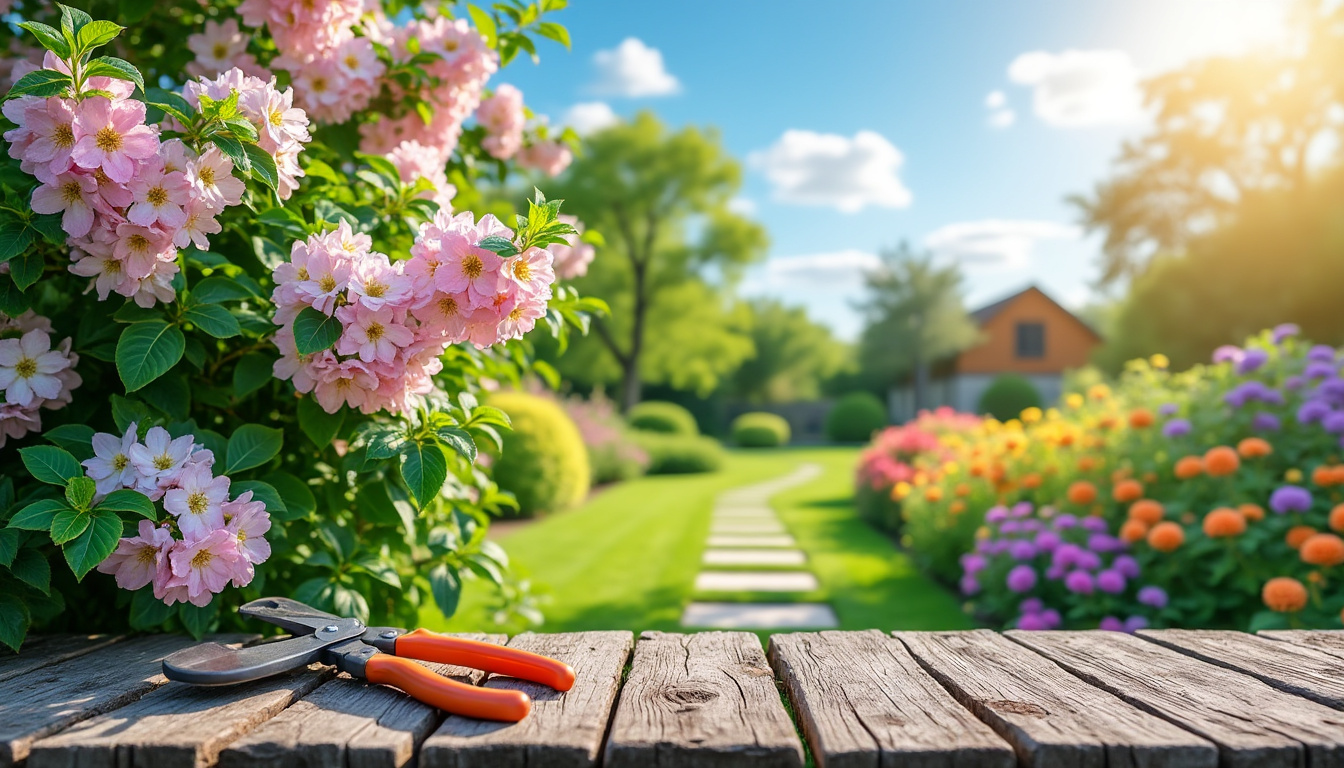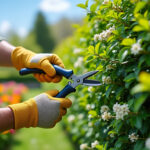Understanding the importance of timely pruning can significantly enhance the growth and blooming of weigela shrubs. These vibrant, deciduous plants, known for their colorful flowers, thrive in a variety of garden settings but require specific care to fulfill their potential. With optimal timing and techniques, gardeners can not only maintain the shape and health of these plants but can also ensure a robust floral display in the spring and summer months. Pruning isn’t just a maintenance task; it’s a critical process that impacts the future performance of the plant, making knowledge of the ideal timing a vital aspect of garden management.
The Importance of Pruning Weigela for Optimal Growth
Pruning plays a fundamental role in the cultivation of weigela shrubs, influencing various aspects of their growth and flowering. This process aids in shaping the plant, removing diseased or dead wood, promoting airflow, and enhancing the overall appearance of the garden landscape. Understanding the nuances of when to prune is essential for achieving aesthetically pleasing and healthy plants that consistently produce vibrant blooms.
Benefits of Pruning Weigela Shrubs
- Promotes Vigorous Growth: By removing older growth, it encourages new shoots to emerge, leading to a bushier and more robust plant.
- Enhances Flowering: Pruning at the right time directly affects the quantity and quality of blooms, ensuring a more vibrant display.
- Improves Air Circulation: Thinning out crowded branches alleviates the risk of mildew and fungal diseases.
- Maintains Shape: Regular pruning helps to retain the desired shape and size, keeping the shrub looking its best.
- Facilitates Health: Regularly removing dead or diseased branches prevents the spread of potential infections within the plant.
Pruning Techniques for Weigela
To achieve maximum benefits from pruning, employing the right techniques is crucial. Each cut made must be effective and cordial to the shrub’s overall health. Pruning should generally involve the following:
- Cutting Just Above a Bud: This encourages new growth in the desired direction.
- Using Clean and Sharp Tools: Ensures clean cuts that heal quickly and lessen the risk of disease.
- Aim for a Natural Shape: Strive to maintain the plant’s natural contours to create an attractive silhouette.
- Remove Diseased Wood Promptly: This prevents any potential spread to healthy parts of the plant.
Determining the Optimal Timing for Pruning Weigela Shrubs
Like many plants, weigela has a specific timeframe when pruning is most beneficial. Timing can greatly influence a plant’s growth pattern, especially in the crucial early stages post-blooming. Different strategies can be adopted for rejuvenation and routine maintenance depending on the season. Knowing whether to prune in late winter, early spring, or after blooming will keep the plant healthy and promote bloom performance.
Ideal Timing and Its Impact on Weigela
The consensus among gardening experts is that the optimal time for pruning weigela is right after the blooming period, typically in late spring to early summer. This timing ensures that:
| Timing | Impact |
|---|---|
| Late Spring – Early Summer | Enhances future blooming, invigorates growth, improves air circulation. |
| Mid-July to Early August | Promotes shaping and prevents unnecessary loss of buds for the next year. |
| Fall and Winter | Risks cutting off future flower buds; generally discouraged. |
| Routine Maintenance | Thinning can be done throughout the growing season to maintain structure. |
Pruning Goals by Season
Differentiating between pruning goals for various seasons assists in maintaining the health and aesthetics of the weigela shrub:
- Spring: Focus on rejuvenating old wood; remove dead branches without sacrificing flower buds.
- Early Summer: After blooming, aim for shaping the shrub and promoting new growth.
- Late Summer: Limit pruning; only remove weak or unhealthy branches.
- Fall and Winter: Minimal intervention recommended; observe the plant’s condition without significant cuts.
When to prune dogwood: a seasonal guide for optimal growth
Tools and Techniques for Effective Weigela Pruning
Equipping oneself with the proper tools is critical for successful pruning efforts. The right tools ensure clean cuts and healthy plants, while enhancing overall efficiency. Each tool serves a specific purpose, making it vital to know which to employ in various situations.
Essential Tools for Pruning Weigela
| Tool | Purpose |
|---|---|
| Pruning Shears: | For small to medium branches, allowing precise cuts. |
| Loppers: | Ideal for thicker branches, offering better leverage. |
| Hedge Clippers: | Useful for trimming larger areas to achieve a symmetrical shape. |
| Gardening Gloves: | Protect hands from thorns and debris while working. |
Caring for Tools
Just as important as having the right tools is keeping them in excellent condition. To maintain tools effectively, follow these practices:
- Sanitize After Use: Use rubbing alcohol to prevent the spread of diseases between plants.
- Sharpen Regularly: Ensure pruning shears and loppers are sharp to avoid shredding stems and leaves.
- Store Properly: Keep tools in a dry location to prevent rust and wear.
Post-Pruning Care for Weigela Shrubs
After pruning, taking appropriate care of the weigela shrubs will help them recover and enhance their growth. Ensuring the plant is well cared for post-maintenance is vital for promoting new growth featuring vibrant blooms.
Essential Care Tips Post-Pruning
- Watering: Ensure that the plant receives ample water, especially during warm summer days to mitigate stress.
- Mulching: Utilizing organic mulch helps retain moisture and controls soil temperature.
- Fertilization: A balanced, slow-release fertilizer in early spring enhances growth potential.
- Observation: Monitor the plant closely for any pests or diseases following pruning, addressing issues promptly.
Expected Results
Working diligently to prune and care for weigela shrubs can result in beautiful, healthy plants displaying their full potential. With proper care, you can expect:
- Vibrant Blooms: A lively display of flowers in the upcoming spring.
- Healthy Growth: A bushier, more robust plant structure.
- Increased Wildlife: Attraction of butterflies and bees, enhancing the garden’s ecosystem.
FAQ About Weigela Pruning
1. When is the best time to prune weigela shrubs?
The best time to prune weigela is right after blooming in late spring to early summer, which allows for vigorous growth and blooming in the following season.
2. What tools are necessary for pruning weigela?
Essential tools include pruning shears, loppers, hedge clippers, and gardening gloves. These tools help ensure clean cuts and efficient pruning.
3. Can pruning be performed at different times of the year?
While late spring is ideal, light pruning can be performed throughout the growing season; however, significant pruning should be avoided in fall and winter to prevent bud loss.
4. How much of the plant should be pruned?
Typically, prune up to one-third of the oldest branches to promote new growth without sacrificing future blooms.
5. What are signs that my weigela needs pruning?
Signs include overgrowth, unhealthy or dead branches, and a decrease in blooming. Regular assessment helps ensure the plant remains healthy and vigorous.















